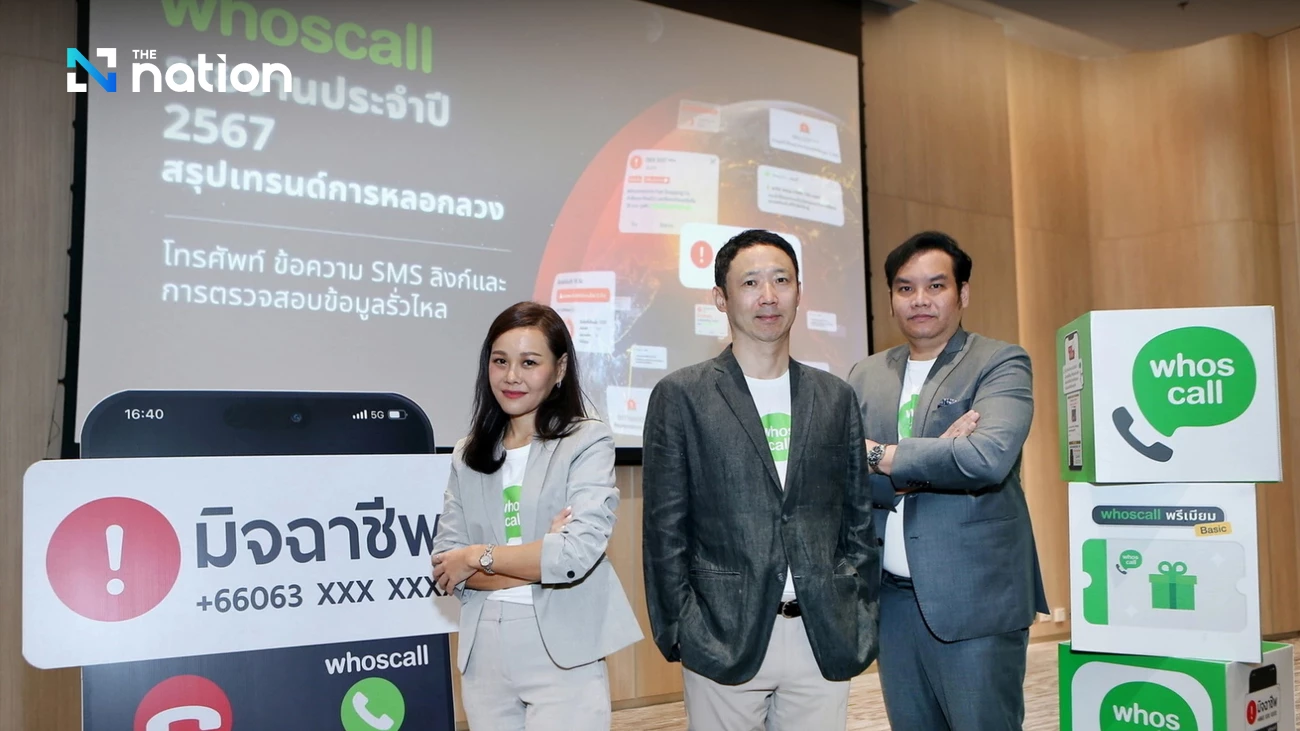
Whoscall warns of increasing impersonation, dangerous links, and personal data leaks, accelerating AI-based number screening to keep up with online fraudsters.
Manwoo Joo, CEO of Gogolook Thailand, stated that since the company began publishing its annual report in 2020, it has been closely monitoring the rising trend of scams across nearly all major markets where Whoscall operates.
Currently, fraudsters are widely using AI technology to carry out scams, making fraudulent schemes increasingly complex and continuously growing. Key scam trends to watch include impersonation of government and private sector entities, financial fraud in various forms—through phone calls, SMS messages, and malicious links—as well as the alarming rise in personal data leaks.
Increase in Scam Calls and Messages in Thailand
In 2024, Whoscall detected a staggering 168 million scam calls and SMS messages in Thailand, marking a 112% increase from 79.2 million in 2023—the highest figure in five years. Scam calls rose to 38 million from 20.8 million in 2023, while fraudulent SMS messages surged to nearly 130 million from 58.3 million in the previous year.
The most common scams include fake product and service sales, impersonation of official entities, fraudulent easy loan approvals, fake debt collection, and debt-related scams.

Rise in Financial Scams and Impersonation of Organizations
Over the past year, the Smart SMS Assistant, an AI-powered service that screens messages from unknown numbers, detected 130 million scam-related SMS messages, highlighting that fraudsters continue to rely on SMS as a primary scam channel.
The most common scam messages contain phishing links, including fraudulent loan offers and gambling ads. Additionally, scammers have increasingly shifted to impersonating both government and private sector entities. Common tactics include posing as delivery services or utility providers, sending deceptive messages that align with government policies—such as electricity bill reductions, metre deposit refunds, the "half-half" co-payment scheme, and digital wallet initiatives—to manipulate victims.
Spread of Malicious and Fake Links
He stated that, as a result, Whoscall developed features like the Web Checker, which allows users to check suspicious and harmful links on web browsers while using their mobile phones. Last year, this feature helped protect users from clicking on various types of malicious and fake links.
The most common harmful links identified were phishing links, designed to steal money or personal information, accounting for 40%. The remaining dangerous links were associated with illegal online gambling (30%) and links that trick victims into downloading malware-laden apps to steal important data from their devices (30%).
Increase in Personal Data Leaks
The annual report also revealed an increase in personal data leaks, monitored through the "ID Security" feature, which was developed to help users assess the security of their personal data. Last year, the ID Security feature became a crucial tool for enhancing awareness of personal data safety.
The analysis showed that 41% of users' personal information was leaked to various platforms, such as the dark web and deep web. Among the leaked data, 97% was email addresses, and 88% was phone numbers, with other details like birthdates, full names, passwords, and additional sensitive information also being compromised.
In addition, the public should stay alert and take proactive measures to protect themselves. For example, downloading the Whoscall app: the Caller ID feature remains a primary defence tool that can identify unknown numbers in real-time, effectively alerting users to scam calls and spam.
Moreover, the public should exercise caution when sharing personal information online and be wary of suspicious links or requests. They can try the ID Security feature to check if their personal data has been leaked and increase their vigilance when interacting through various channels, such as email, phone numbers, and SMS messages.
Given the continuously evolving nature of scams, Whoscall is committed to leveraging its AI technology expertise to enhance fraud protection and build a cybersecurity defence network that encompasses all sectors of Thai society. We are ready to work closely with the government, businesses, and the public to reduce scam rates, raise awareness about digital fraud, and introduce new AI-powered services to protect both users and organizations across all channels.


